This is a Baby Brownie Special made by the Eastman Kodak Corporation between the years of 1939 and 1952. This model was an upgrade from the simpler Baby Brownie by adding a fixed telescopic viewfinder an integrated shutter release button, and a cloth carrying handle. Later models of the Baby Brownie Special also added a switch to select between Timed and Instant shots. When it was first released, the camera cost $1.25 making it a very popular entry level camera.
Film Type: 127 Roll Film (eight 4cm x 6cm exposures per roll)
Lens: 65mm f/16 uncoated meniscus
Focus: Fixed 5 feet to Infinity
Viewfinder: Reverse Telescopic
Shutter: Rotary
Speeds: Instant (probably 1/50)
Exposure Meter: None
Battery: None
Flash Mount: None
Weight: 188 grams
Manual: http://www.cameramanuals.org/kodak_pdf/kodak_baby_brownie.pdf
History
The Kodak Baby Brownie Special was produced from 1939 to about 1952 (various sources online suggest anywhere from 1951 – 1954). It was an upgrade from an earlier model called the Kodak Baby Brownie. The “Special” model upgraded the original’s metal frame flip up viewfinder with a telescopic glass viewfinder, the simple rotating shutter release with a plastic shutter release button, added a carrying handle, and changed some cosmetics.
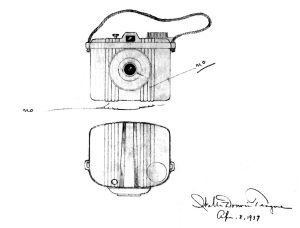
Like several other cameras sold by Kodak in the 1930s and 40s, the Baby Brownie Special was designed by famed designer, Walter Dorwin Teague and features prominent ‘art deco’ styling. The illustration to the left was found in the archives at the George Eastman House in Rochester New York and appears to be an early concept drawing from 1937. It seems that a top shutter release was in the plans but never implemented.
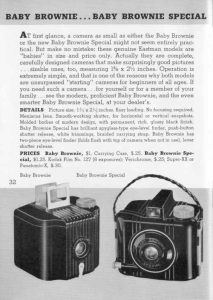
Selling in 1939 for $1.25, it was only 25 cents more than the non-Special model which is pictured next to it in the advertisement to the right from Kodak’s Summer 1939 catalog. When adjusted for inflation that’s like a difference of about $17.50 to $22 today. Would you pay $4.50 more today for a product with such minor differences?
The Baby Brownie Special was in production for at least 12 years, and throughout it’s life had a few changes including variations in the design of the side catches. Later models and those produced in the UK had a rotating knob that allowed for both Timed and Instant shots, something the other models lacked.
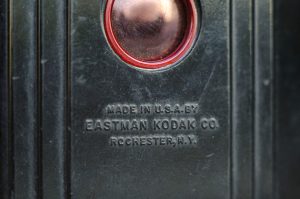
It is impossible to determine how many of these cameras were produced, but based on the long life of the model, I have to believe it was well into the hundreds of thousands. The United States had just come out of the Great Depression and by the time of their entrance into World War II, the country was more eager to shoot photos of kids and family events, making the Baby Brownie Special an inexpensive option.
Today, the Baby Brownie Special isn’t quite what I would call collectible, but I’d wager that many collectors have one in their collection. These things are extremely common today and often show up for sale in antique shops. People who love art deco designs or things created by Walter Dorwin Teague are more likely to seek these out as opposed to actual photographers.
My Thoughts
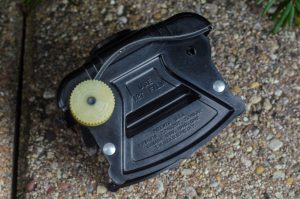
I did not want this camera. As a collector, I have to draw the line somewhere as to not buy every single camera that I come across at thrift shops, antique stores, and garage sales. If I didn’t have that line, my entire living room would be full of boxes of point and shoot cameras from the 90s, simple automatic everything SLRs from the 80s, cheap Instamatics from the 60s and 70s, and Bakelite Brownies from the 40s and 50s.
Yet here I am, in possession of a Kodak Baby Brownie Special and writing a review of it….
It started with a couple of trips to a small town in northwest Indiana called Crown Point that has a downtown area with 5 antique/thrift/consignment shops that always seem to be stocked full of these undesirable cameras.
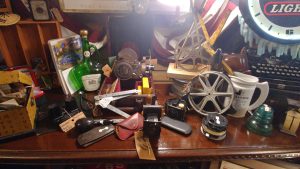
During one of these trips to do some “looking” as I like to tell my wife, I came across this camera and 2 of it’s twins. You see, I have a line, a point at which I can say, “Mike, you don’t need this”. And I stuck to it. Making that decision easier was the price of the camera was an absurd thirty something dollars.
Then I saw another. Hmm, OK. The same camera at a different shop. “They made millions of these” I said to myself, and moved on. It was a little cheaper than the first, but still in the twenty-something dollar price range. I wasn’t about to drop two sawbucks (plus tax) for this little plastic box.
Then came a third. This one was $9. “OK, what the hell”, I thought? Why do I keep coming across these things and why does the price keep dropping? Was the universe trying to tell me something?! I resisted, I really did. But like all mortal men, I have flaws, and out came the $11 I had in my pocket, just enough in cash to take this little Bakelite wonder home with me.
On the way home, I texted my friend Adam and showed him my latest pickup, making sure to leave the price tag prominently displayed on the side to help put perspective of why I bought it. Adam is in a similar predicament of knowing that he can’t possibly buy every camera he comes across and that he too, needs to have some standards of which models he says yes to. But this time, he sheepishly replied “I have one too”.
We quickly changed the discussion to something else and never spoke about it again.
I don’t know if it was shame or what, but as I got home and put the little camera on my shelf, I couldn’t get it out of my mind. I had to shoot this thing. Maybe if I could get some decent images out of it, I could justify to myself that the $9 (plus tax) was well spent.
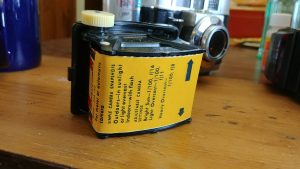
Thankfully, an opportunity to use the little camera quickly came up as we were headed to visit some family in northern Michigan. I looked through my collection and decided upon a very expired roll of Kodak Verichrome Pan that I thought would be a good match to the Baby Brownie Special’s single shutter speed.
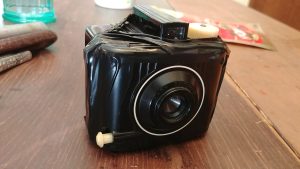
I loaded the roll of 127 film into the camera and upon closing it, I lost some confidence in the camera’s ability to keep light out as the two halves of the camera seemed to rattle even with the twin side latches closed. In an effort to give this little camera the best possible chance at good images, I wrapped all seams in black electric tape.
Using the camera requires practically no explanation. Unlike many Kodak Brownies that have sliding latches to switch between Timed (actually Bulb) and Instant photos, or some that have a movable aperture to change the f/stop of the lens, the Baby Brownie Special has literally no controls other than the shutter release. It is a fixed focus and single speed camera with a slow lens. Point the camera at something vaguely more than 6 feet away and press the button. Don’t forget to advance the film to the next exposure unless you like double, triple, or multiple exposed images.
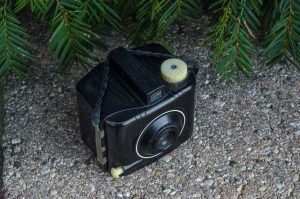
In an effort to not give the impression that I hated this camera, I should say that my experience was quite the contrary. I found a sense of relief at it’s simplicity. When you don’t need to worry about exposure or focusing on an object and you can just point the camera at something and press a button, you can free your mind to think about something else and enjoy the experience.
The camera is light weight and fit into my large coat pocket. When I was carrying the camera, the small little strap on top of the camera gives the illusion of some sort of fashion accessory. My clothing choices often fall into the “T-Shirt and Jeans” category, but if I was more of a fashionista, I could possibly see some type of retro-chic model carrying one of these next to her doggy purse. I ended up enjoying this camera a lot more than I thought I would. The simplistic nature and compact design of the camera gives the illusion of a toy, and toys are meant to be fun. Yes, I actually had fun using this little thing!
My Results
I took the Baby Brownie Special with me on a winter trip to northern Michigan in late 2017 and loaded in a roll of expired Kodak Verichrome Pan 127 film. I chose this film as I knew that VPan has a very good shelf life and most likely would give me good shots, plus the single speed shutter should have been a good match for the poor lighting I would likely encounter in this area of the country in the winter.
I’d say that my choice for film was spot on as the images all came out quite nice. Each of the above images required a bit of a contrast tweak in Photoshop but otherwise came out okay. If I were to shoot this again with fresh film, I would likely stick to 100 speed films and slower as I think anything faster than that would risk over exposure.
A few images, most notably the graveyard and statue pic show circular orbs which is likely degradation of the film and not something from the camera itself. There is also a diagonal light leak that appears in every image in the bottom left corner. This is likely a spot I must not have done a good job of sealing the camera with electric tape.
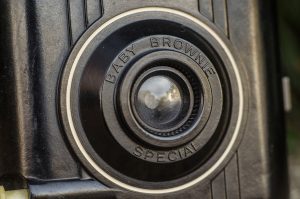
The images themselves are about what I expected from a single element Brownie box camera. If I had one criticism of the camera, its that the meniscus lens loses a lot of sharpness on the sides, and I think the 4cm x 6cm aspect ratio was a poor choice by Kodak. This camera would have been more suited as making square 4cm x 4cm images, as you would have taken more advantage of the relative sharpness in the center of the lens, plus you’d get 12 exposures out of a roll instead of 8.
I doubt that anyone who originally bought this camera for $1.25 cared much about edge sharpness. The look of the photos is period correct, and as long as your images aren’t composed in way in which your eye needs to be drawn to the sides, you really don’t notice the softness too much.
I enjoyed my time with the Kodak Baby Brownie Special and for what it is, I imagine that the original people who bought this camera did too. The camera is compact, very lightweight, and extremely simple to use. Even throwing 40+ year old film at it on heavily overcast winter days, I still got good exposures from this camera.
I feel like my $9 was well spent, and I can say with confidence that if you find yourself tempted by fate to pick one of these up. Go for it, and like my friend Adam said to me, “I have one too!”
My Final WordHow these ratings work |
The Kodak Baby Brownie Special was an inexpensive and popular camera that was sold for well over a decade at the end of the great depression and around World War II. Using 127 film, it shot 4cm x 6cm images on 127 film that were big enough to make contact prints from, or small enlargements. The camera offers no control and is a basic point and shoot camera. Therein lies it’s best attribute. This is a camera that anyone can take with them and make snapshots without any knowledge of photography. The images the camera make are understandably soft, especially around the edges, but still good enough to capture the intent of the image. These things are extremely common these days at thrift and antique shops, and as long as the price is kept in check, they’re worth checking out. | ||||||
| Images | Handling | Features | Viewfinder | Feel & Beauty | History | Age | |
| 0 | 2 | 0 | 1 | 2 | 0 | 40% | |
| Bonus | none | ||||||
| Final Score | 7.0 | ||||||
Additional Resources
http://camera-wiki.org/wiki/Kodak_Baby_Brownie_Special
http://web.archive.org/web/20170321215443/http://www.brownie-camera.com/3.shtml (This site was down as of the writing of this article, so here’s a link to an archived page.)
https://www.lomography.com/magazine/322452-vintage-camera-reviews-kodak-baby-brownie-special
http://www.brownie.camera/brownie/baby_brownie_special.html
https://schneidan.com/2012/05/14/antique-kodak-baby-brownie-special-toy-camera/

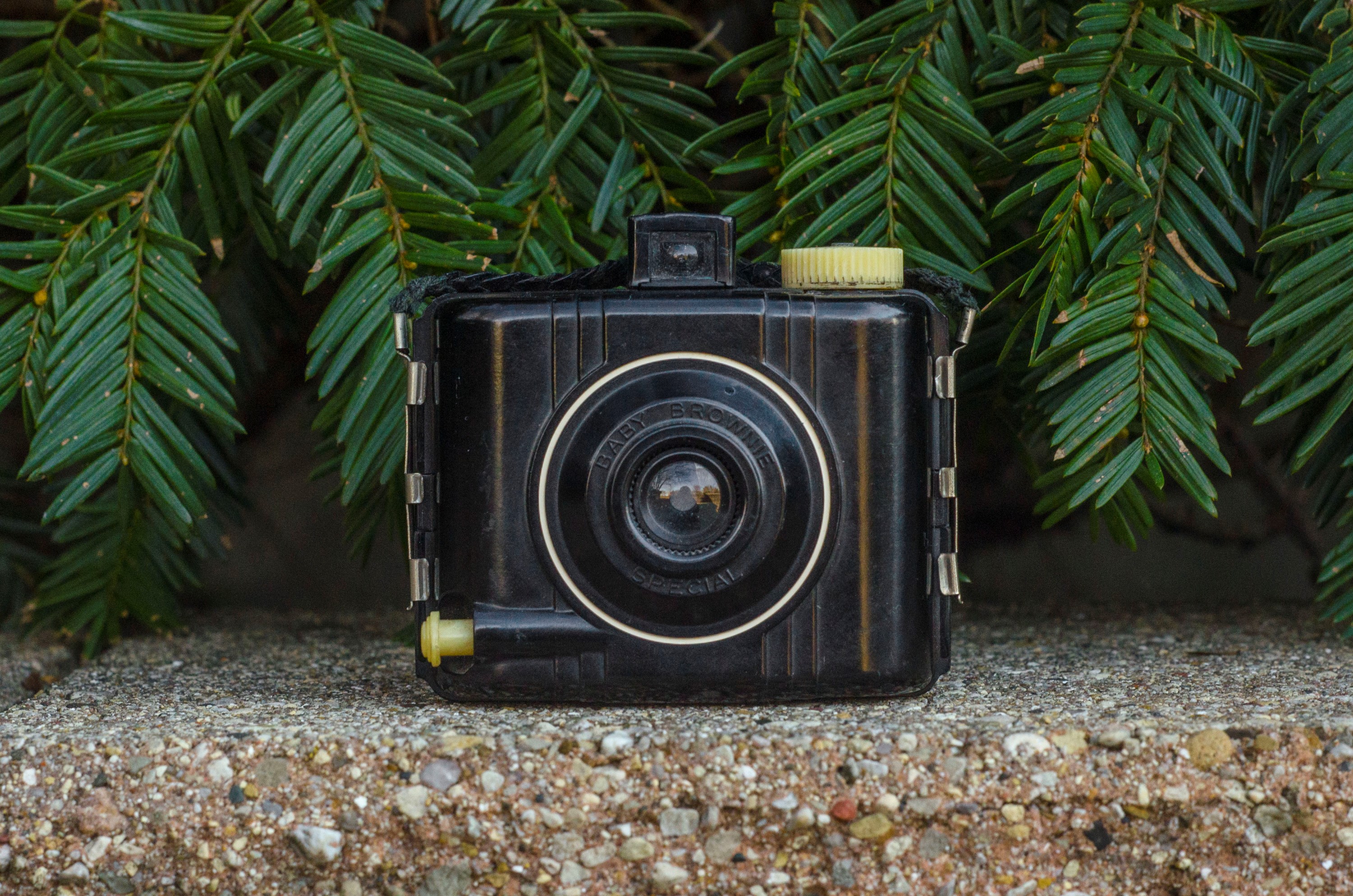
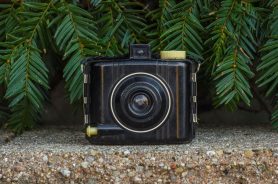
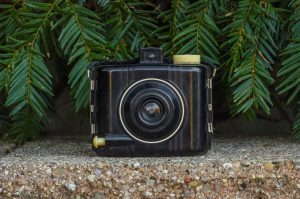







And unlike me, you’ve actually had a chance to shoot and share your thoughts on this camera. Like you I tried to seal it up, and ran a roll of improvised “Portra 127” through it, but my results were a bit on the shadowy side with light leaks. I made a note to do a bit more with it in time, but that was a year and a half ago!
Great write up! I do agree that this would have made a great camera for the 4×4 size 127, but wonder if that was even “a thing” when it was first released!
I’m 74 and STILL have the one I bought in 1951. (Make INTERNAL light seals for this camera as you do for older TLR cameras – fabric or rubber). 127 film was the cheapest and was everywhere. It’s still available today (or cut your own from 120 film.) Winter pics from this camera leave a lot to be desired -TOO MUCH WHITE. Summer and/or CA & southern states – it’s a whole ‘nuther ball game. Nice contrasts, sharp (for this camera) images and generally nice photos of my dog, at the lake and some people. Now, make up 127 film from LOMO films and you’ve got a real bargain!
Does the Special really have a time/instant shutter setting? I’ve seen one on the non-Special, the plain Kodak Baby Brownie. But I have looked at photos of about 100 Kodak Baby Brownie Special samples just now and I don’t see any with a time/instant shutter selector.
Jerry, I took a look at my Brownie Special and it definitely does not have a Time/Instant shutter setting. I see where I said that in the review, but I wrote that review years ago and I am uncertain where I read it from. While I try to make sure everything I include is right, on occasion I get my facts mixed up as I can no longer see any evidence that this camera ever came with such a setting.